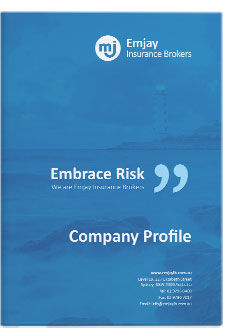In last week’s blog post Risk management – What’s your plan? we looked at why risk management planning is so important for your business and that it typically involves the following steps:
- Step 1. Identifying and assessing potential risks
- Step 2. Working out how to manage and control those risks
- Step 3. Keeping an eye on how potential risks change and evolve over time
This week, we’re delving into Step 1 and explaining how you can identify and assess the risks that have the potential to impact your business.
When it comes to identifying and assessing risks, some are more obvious than others. Think of an iceberg. There are risks that are easily identifiable – the ones that lie above the waterline. We can see them coming. But, as we all know, what lies above the waterline is just the tip of the iceberg. Beneath the surface lies an absolute plethora of other risks that need to be considered. If they’re not, just like an iceberg, they have the potential to sink your business.
So what sort of risks are we talking about?
All of them! Big. Small. Pretty much anything and everything you can think of.
Turn your mind to all the many and varied risks your business may potentially face. Brainstorm a list. And get your team involved – this will ensure your list of potential risks is comprehensive. Even if a risk seems somewhat far-fetched or extremely unlikely to occur, you should still put it on the list.
Every business is different and will inevitably be faced with different risks, so it’s impossible to provide a list here of all the types of risks you should be wary of. However there are some risks that can commonly effect small businesses:
- Natural disasters, such as fires, floods and storms
- Employee incidents, such as workplace injuries, theft or fraud by staff, and loss of key team members
- Supply chain interrruptions, resulting in delayed stock deliveries or inventory shortages
- Customer-related issues, such as failure to pay on time or declining customer numbers
- Financial matters, such as increases in interest rates, inflation or modified loan terms
- Property and equipment related problems, such as damage, theft or vandalism
And the list goes on. Remember, life can be unpredictable and you never know what may be around the corner – so your list should be as comprehensive as possible.
I’ve listed all my risks. Now what?
Armed with your list of potential risks, you can now make an assessment of each of those risks. To assess each risk, ask yourself:
- How likely is it that the risk will occur?
- What might cause the risk to happen?
- How serious would the impact be on my business?
By critically thinking about each risk in this way, you’ll soon develop a clearer picture about which of the risks pose the most serious threat. These are the ones you’ll need to address as a priority when it comes to managing and controlling your risks – more about that in next week’s blog post!
Does it all seem a bit overwhelming? That’s understandable. But it doesn’t have to be.
Risk management planning
While identifying and assessing risks, and developing an effective risk management plan, can be a complicated task, there are always experts on hand to help guide you through the process. So seek advice from a specialist who has lots of experience when it comes to the risks that may impact a business just like yours. They can help you see what lies beneath the waterline.
Emjay Insurance Brokers provides advice on risk management planning and provides solutions to businesses of all sizes. They make it easy for you to access the advice and services you need to ensure your business is protected. Contact us to day to discuss your needs on (02) 9796 0400.
NEXT WEEK: Step 2. Working out how to manage and control risks





